Nour Bishouty &
Daniella Sanader
Daniella Sanader
Two Figures In Patchwork Clothing Move Forward Via Camel
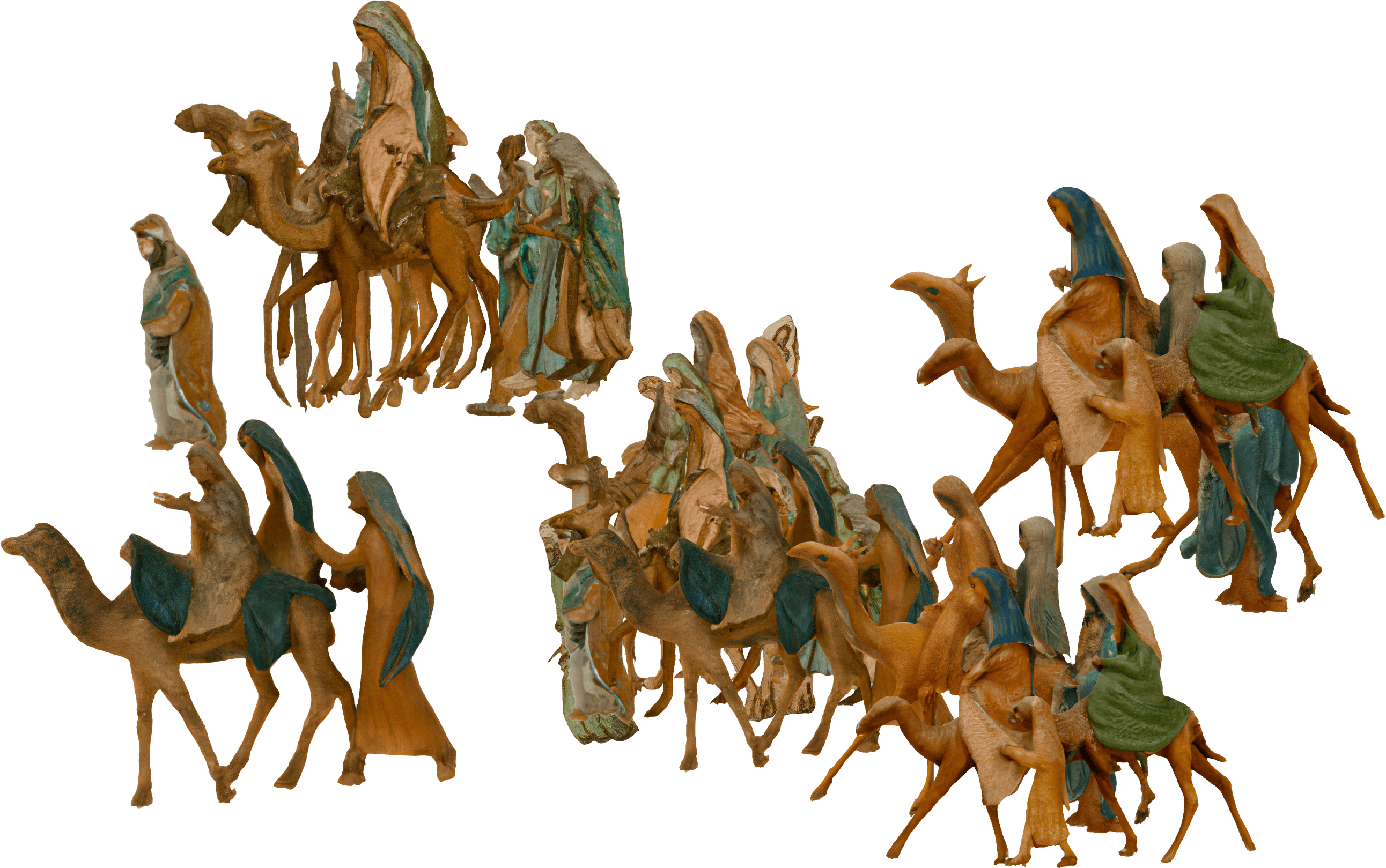
A brush stroke, a palette, an image—two figures in long robes are travelling via camel. Their bodies stretch and gently curve, tones in green, brown, blue are crackled and warm. Their movement feels slow and measured; their direction is deliberate.
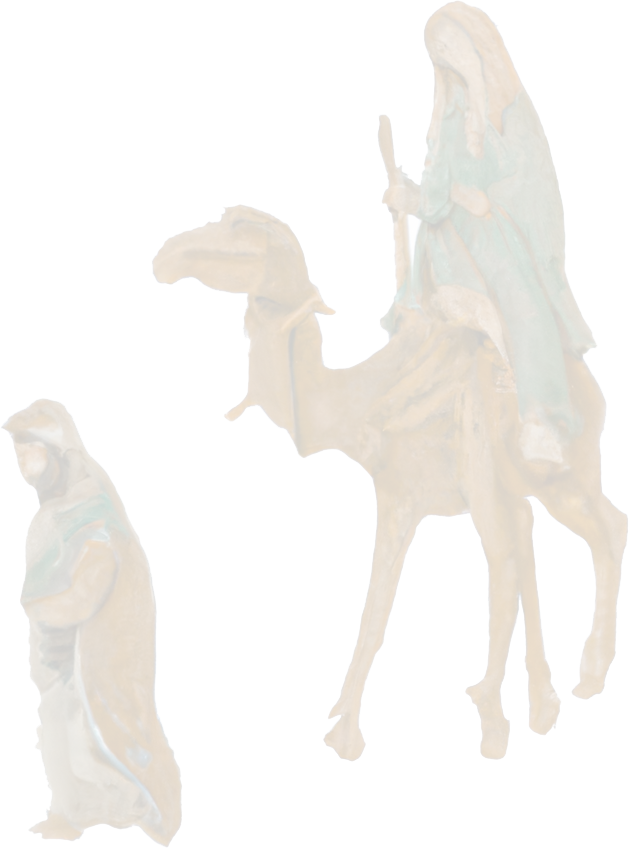
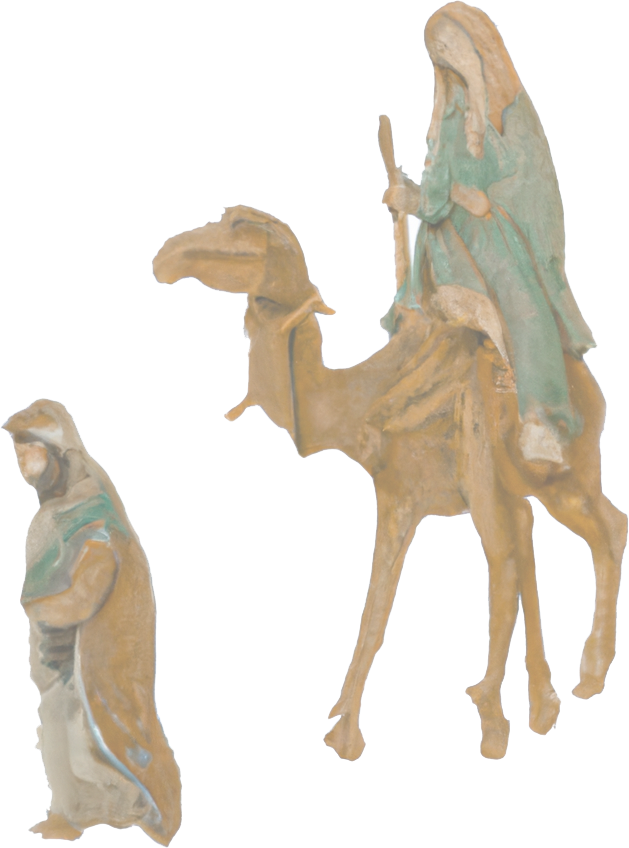
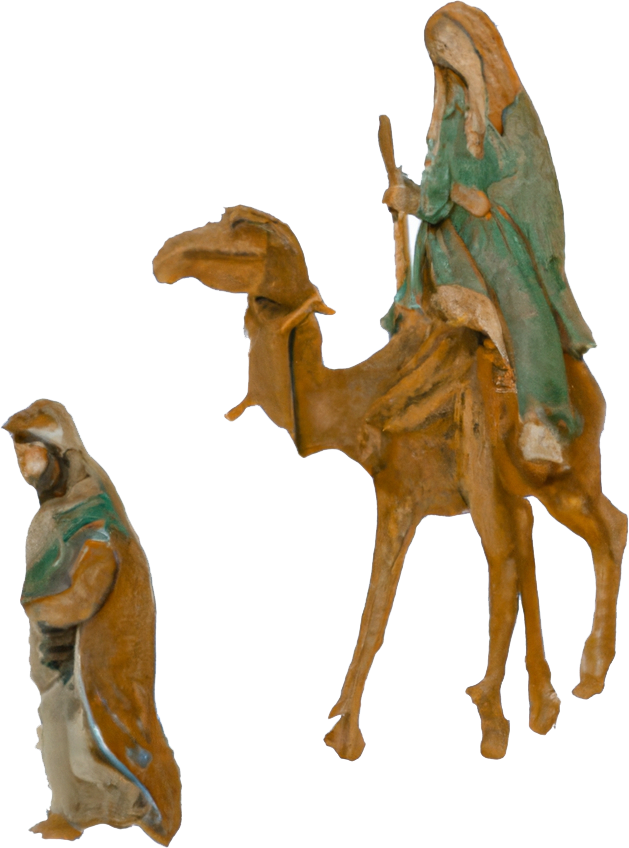
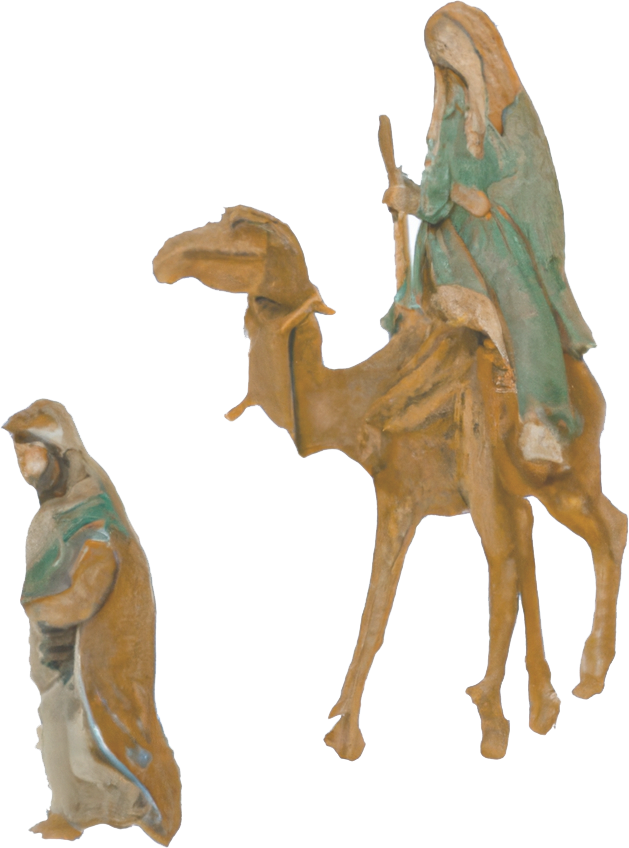
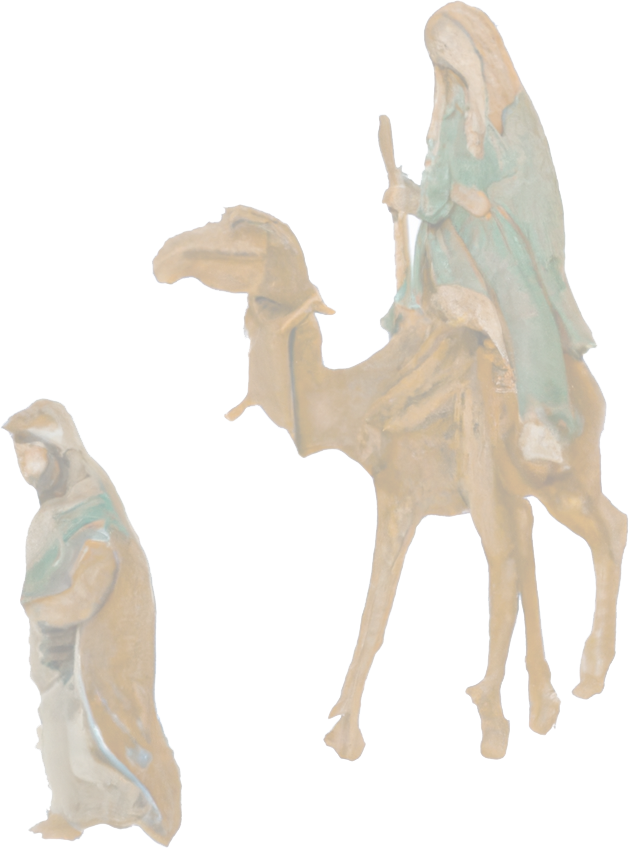
[1] Our conversations began after Daniella reviewed Nour’s artist book 1—130: Selected Works Ghassan Bishouty b. 1941 Safad, Palestine—d. 2004 Amman, Jordan (Art Metropole and Motto Books, 2021) in the Brooklyn Rail: [access here]
The word “attention,” from its Latin roots, carries the association of stretching toward; of reaching for something. While archival research carries a number of bodily associations—flipping gingerly through papers and photographs, scrolling methodically through fonds and search results—it’s worth remembering that this simple process of devoting one’s focus to an archival object (a fragment, an image) is a physical one as well. It’s a constant effort of negotiating distance with outstretched arms, of attending to a gap that shapes the ongoing work of knowing. As an artist and writer, respectively, we have been talking about this distance in our practices a great deal, over years of conversation in our shared city of Toronto
[1]
; we both hold a curiosity for the kinds of possible distortions, misunderstandings, and opacities that can manifest between an archival object and the researcher that stretches towards it.
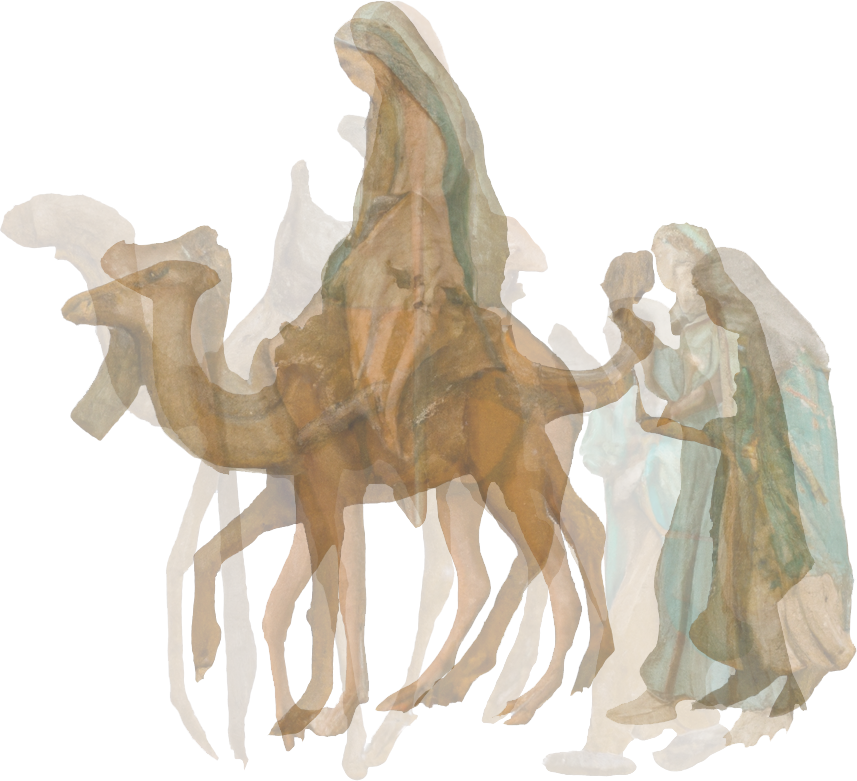


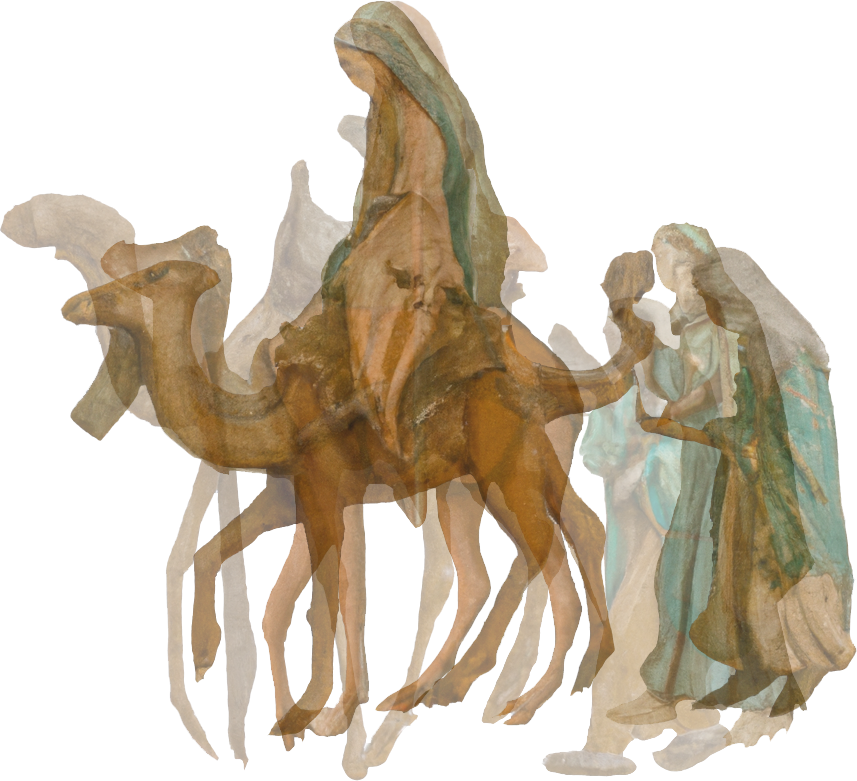
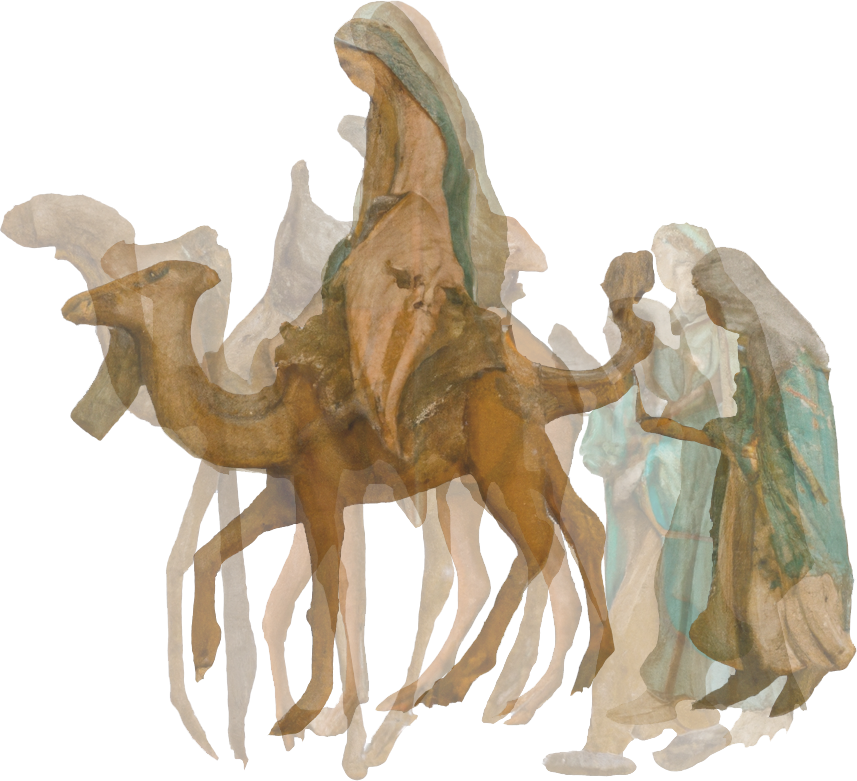


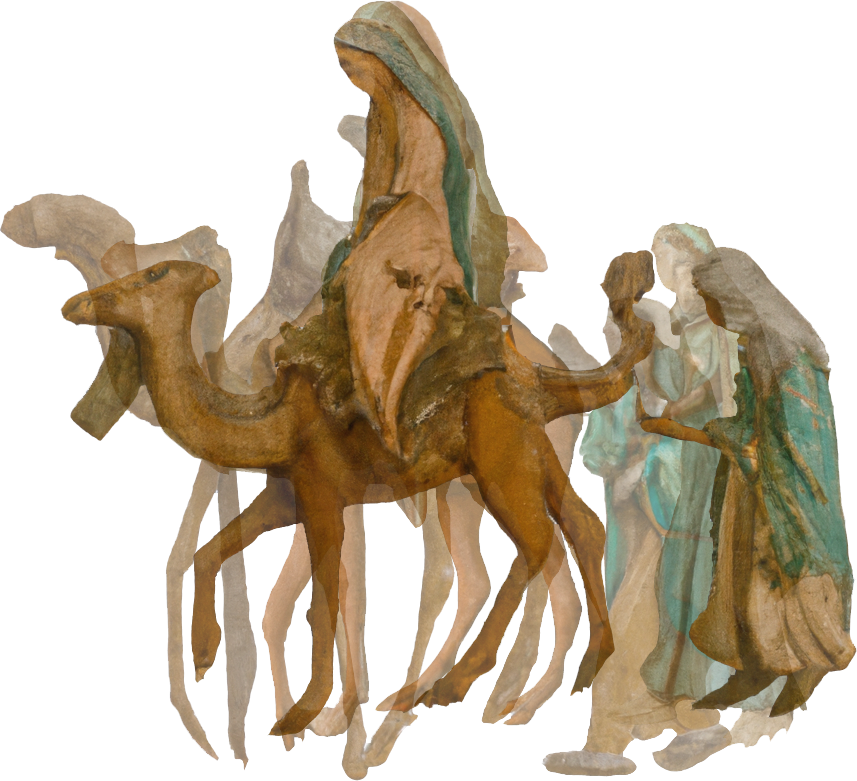
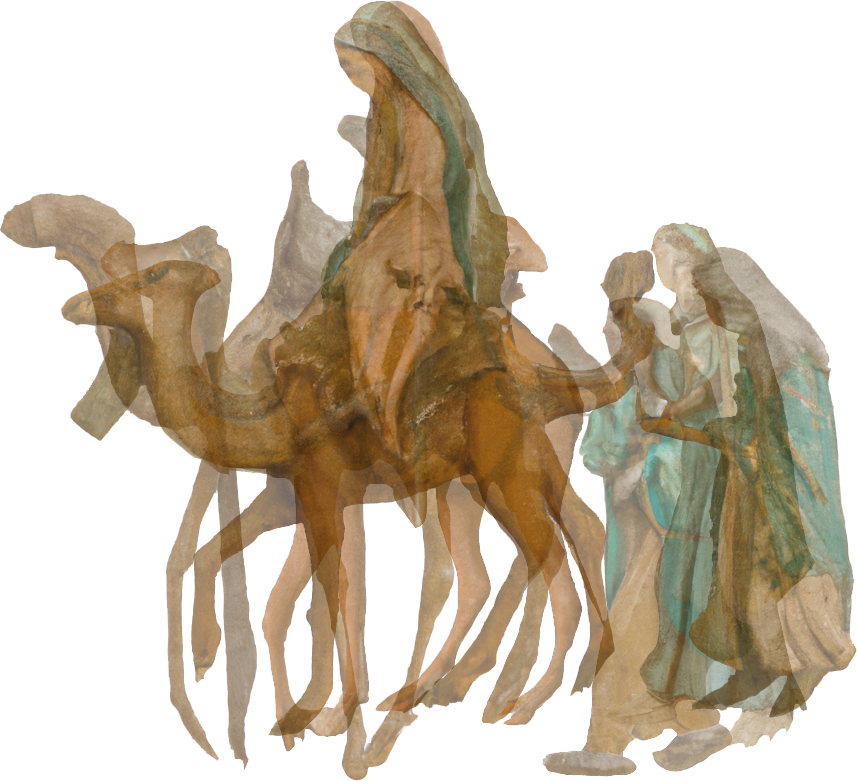

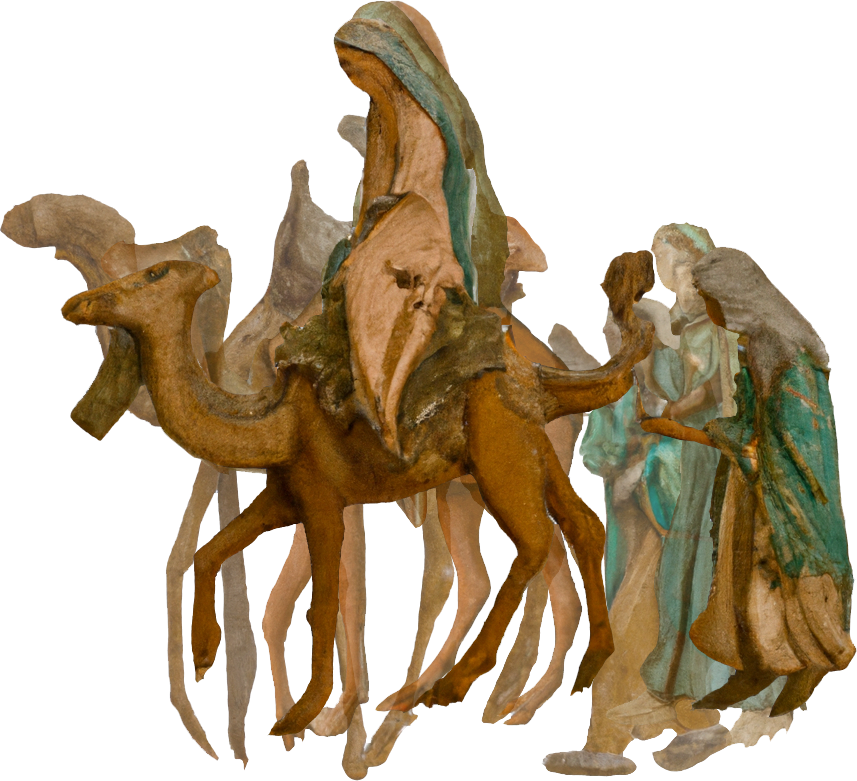

















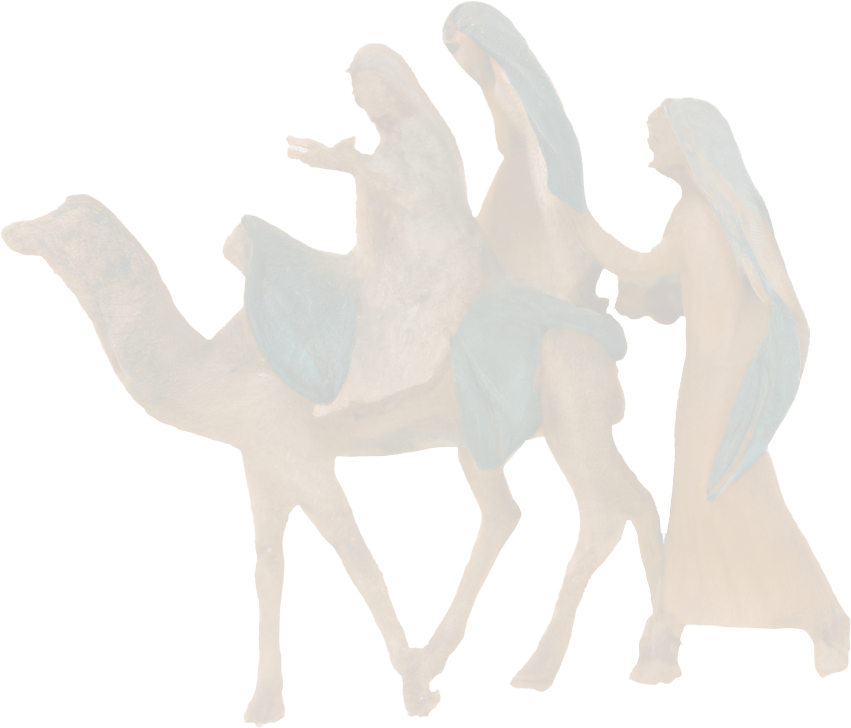

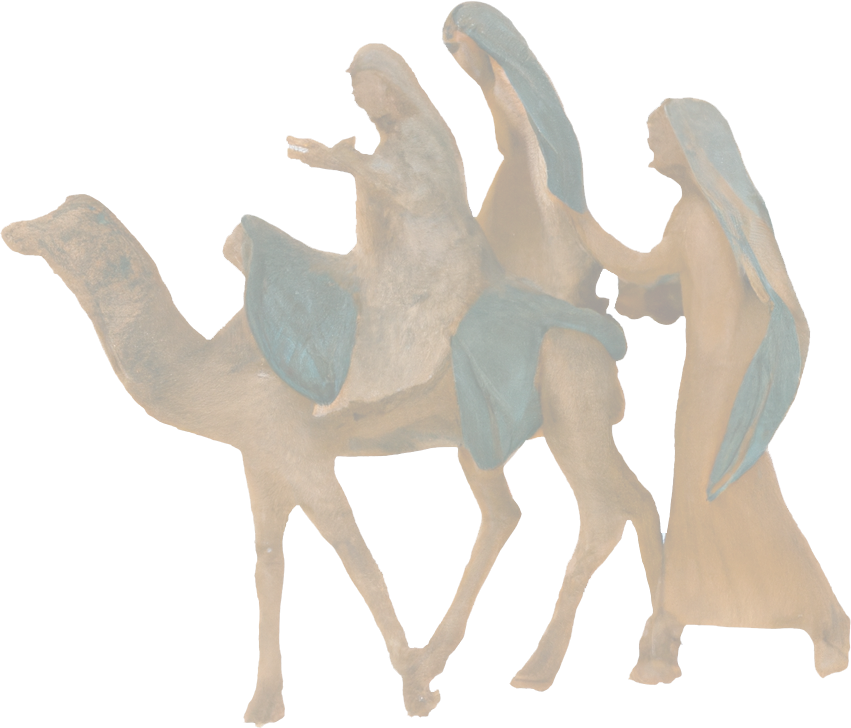
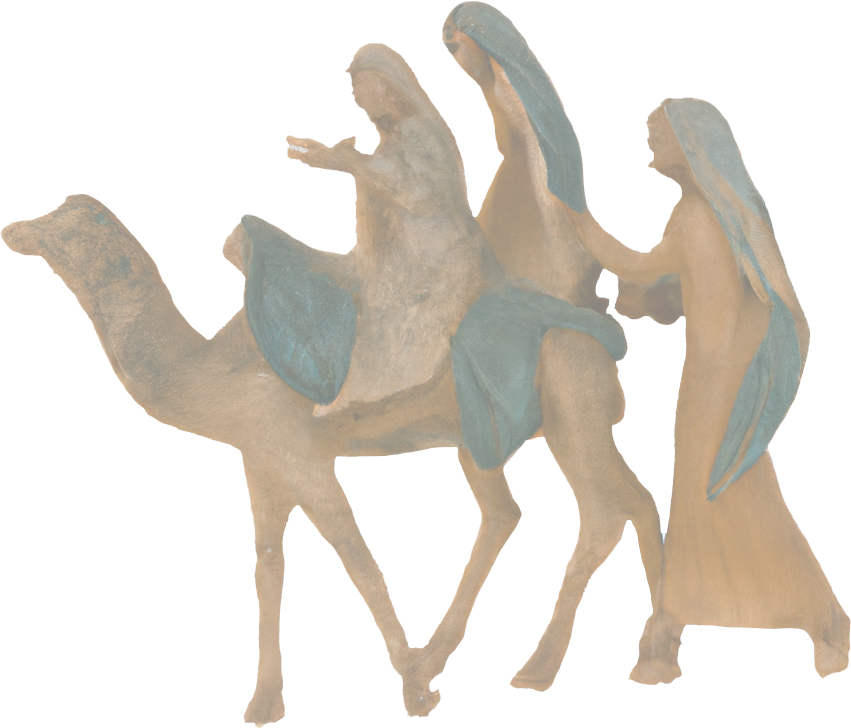
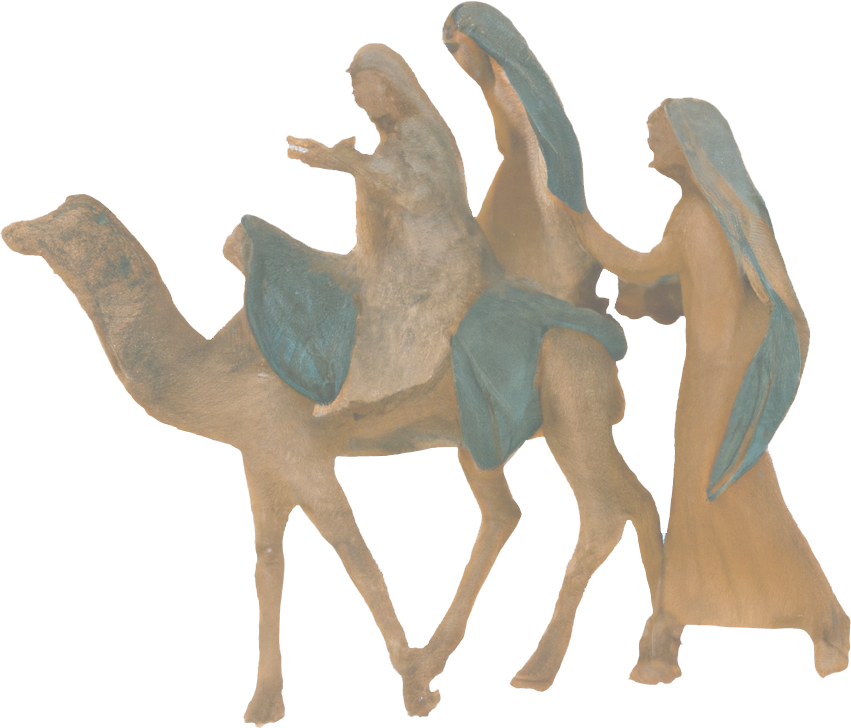

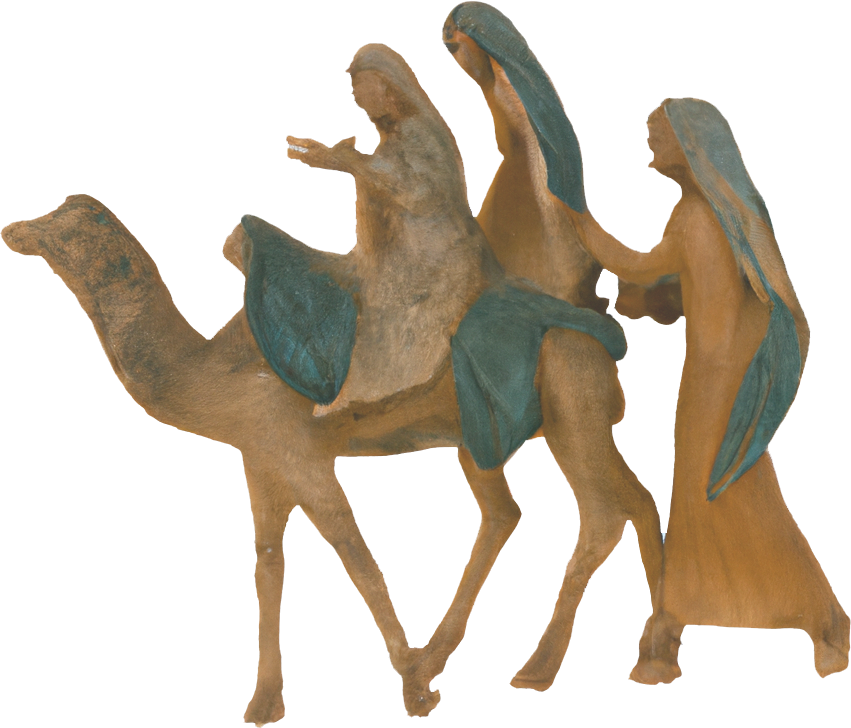












My eyes move across the painting, searching for anchors. Two figures in patchwork clothing move forward via camel. Its legs rattle with each step as they steady themselves, blurring limbs and shoulders. Their direction is shared but they feel distant from one another; unlikely companions.
Like memory (and an archive), attention is distortive by definition; the physical and cognitive processes involved in such faculties entail directing focus towards a specific stimulus, holding relevant information, filtering out distractions, encoding and selectively attending to fragments contingent on past experience, preference, and prejudice. Distortion describes a visual or physical change in form, a contortion, bend, or stretch out of shape. Here, we extend its viscousness as a function of archival practice—tradition, protocol, fever—inherent in the internal and external processing of any historical material. In that way, there is a level of mischief in distortion, and thus an opportunity for poetry and for meaning to be extrapolated. Poetry and mischief are two modes of manipulating (distorting) material.
Three figures are furtive and communicate in whispers, linking arms and lowering gazes on the back of a camel. Their feet move in unison, a delicate clatter. They turn inwards towards themselves, they darken and avoid. They have a shared intention.
As an experiment, Nour has been extracting figures sourced from paintings made by her late father, artist Ghassan Bishouty, using them as prompts to produce new images via an image-generating AI (Artificial Intelligence) system. Divorced from the arid landscapes in oil and canvas that previously supported them, these figures appear constantly on the move, their clothes and limbs refracting, subdividing, and rippling with new—and increasingly surreal—textures.
Elsewhere in her practice, these details from Ghassan’s paintings have formed the basis of collages, abstract shapes carrying new rhythms across flat expanses of colour. But when filtered through the AI, the idiosyncrasies of one archive—one that’s personal, familial, intimate—merge with those of another—statistical, algorithmic, seemingly infinite. The resulting bodies seem to vibrate under the weight of these contradictions; all they can do is continue to move forward, one shaky step at a time.
I offer you these two figures again, as they rush headlong with a camel, flapping robes in peach and green. Its long neck twists as a knotted tree branch, legs splinter and divide impossibly as roots. They hold their hands before them as they move, fingers extended and hazy.
[2] Iman Mersal, Archives & Crimes, trans. Robin Moger. Kayfa-ta and Archive Books, 2022: 50.
“Creative distraction is the open-ended moment which holds both remembering and forgetting,” Iman Mersal writes, “like the instant of waking from a dream in which you were searching for the keys to your own front door. You open your eyes and know that you’re at home, where you should be; that you’re still inside and that the missing keys should be in here with you; that, even if you can’t find them, you’ll still be able to open the door and go out into the world.” [2] In the Egyptian poet and scholar’s thinking, archival research is necessarily a rhythm of distraction and drift, of being both inside and outside of one’s own questions, remaining present for both the gaps and opportunities they offer.





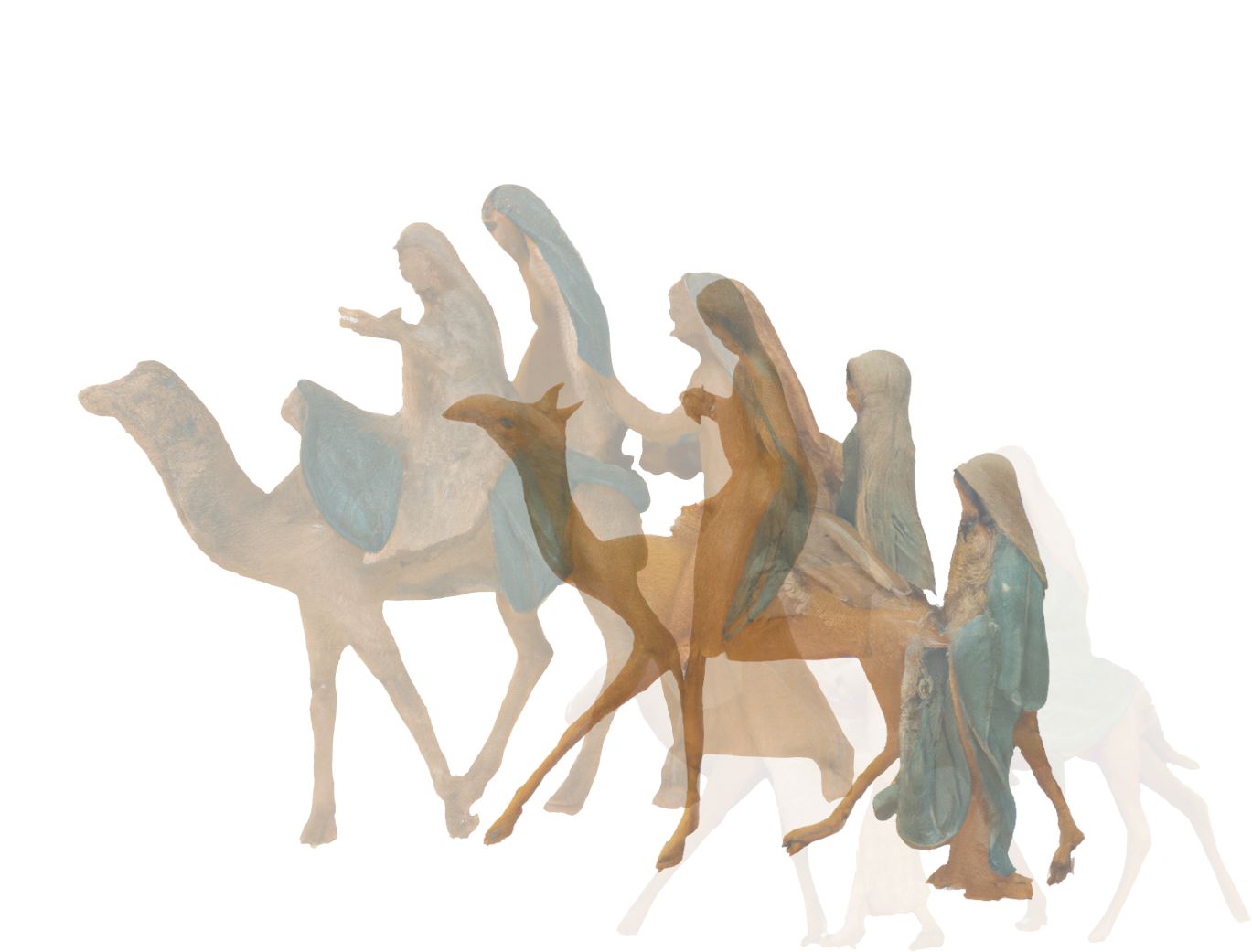
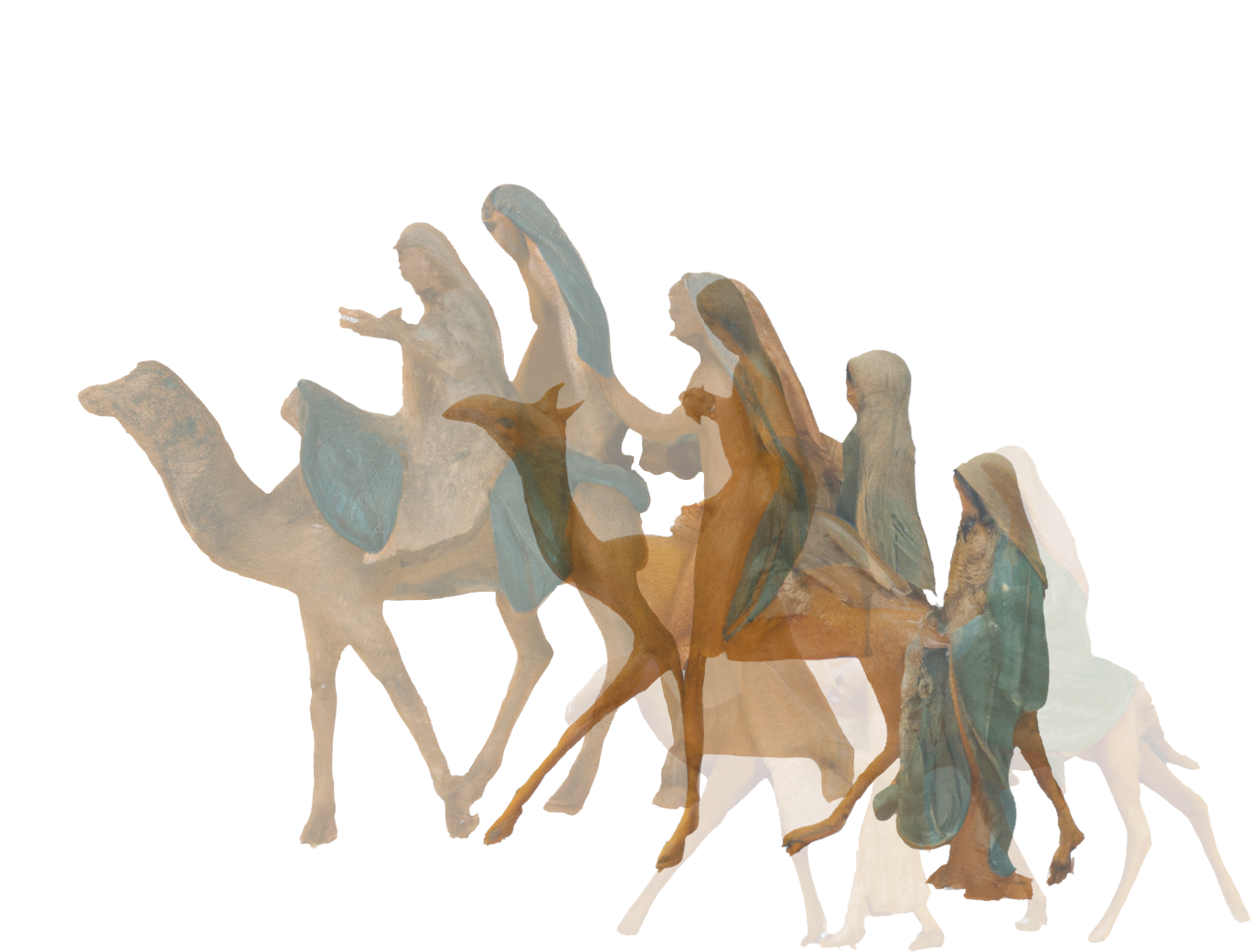






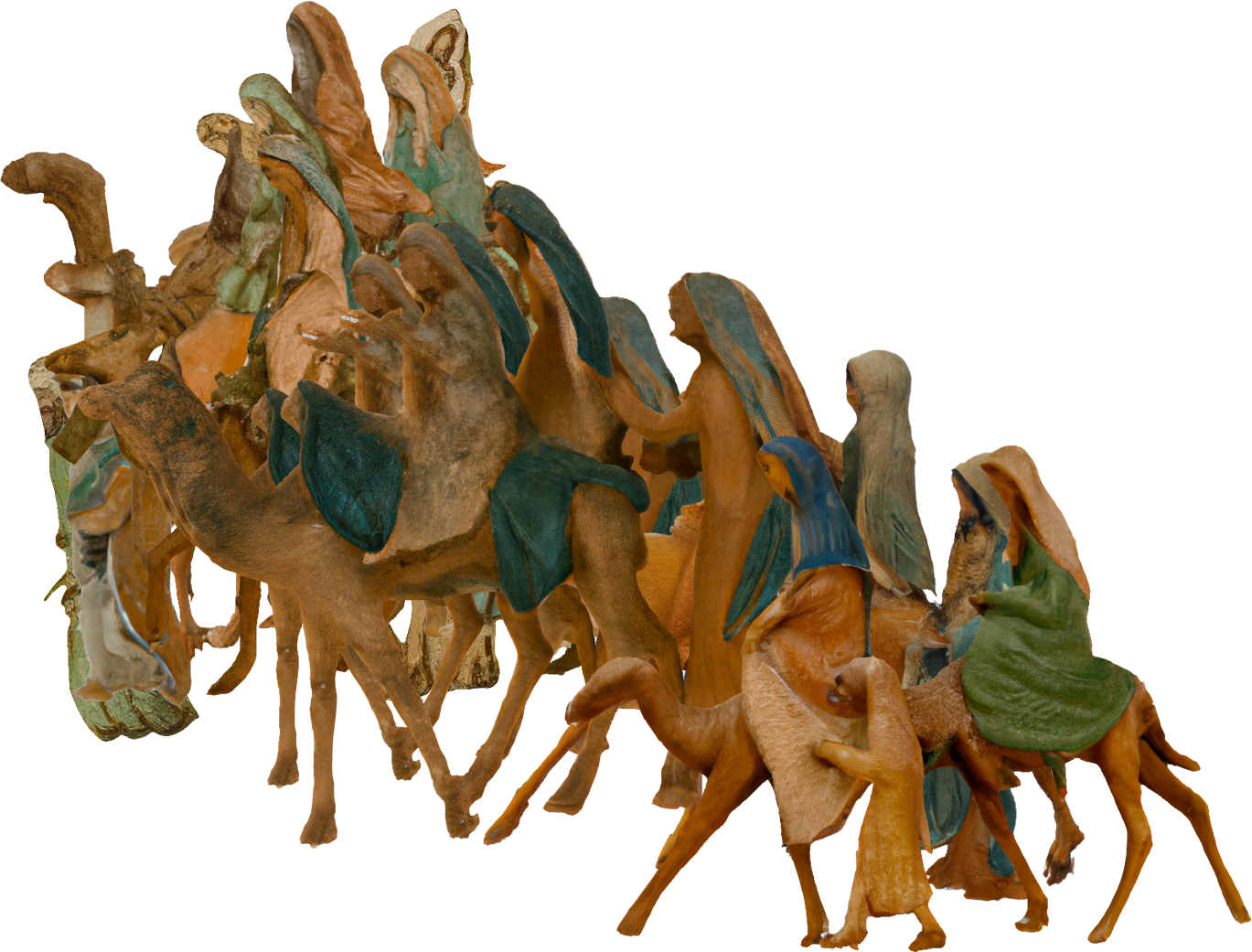














Three figures accumulate in draped fabrics and soft shoulders, balanced along the curving spine of a camel. They muddle in their hearts and chests as their memories wander from body to body, unable to land. The animal tightens as the first begins to forget.
What else can be written to describe Ghassan’s painting, the source of these distorted figures? One approach would be to share that it is titled Al-Wadi (c. 1981-83); that it depicts a Bedouin settlement in the Jordanian landscape, people and animals arranged in the small clusters of daily life. Another might be to contextualize the painting within his broader body of work, and the forms of exile that irrevocably marked Ghassan’s life—having fled Palestine to Lebanon with his family as a young child in 1948, and once again to Jordan during the Lebanese Civil War in the late 1970s— that is, to place Al-Wadi amongst the remnants of a life’s creative practice, catalogued and carried across borders by Nour and her family.
A third might be to unfocus one’s gaze, allowing the facts and the trajectories of Al-Wadi to resonate differently, to begin to distort—following the scene’s tents, rocks, and grasses as they transform, receding into a hazy-blue skyline. Bearing in mind the conditions surrounding the life and work of a Palestinian artist who was little known during his lifetime, the decision to distort Ghassan’s work using AI (a ravenous mega-archive functioning at a colossal scale that is at once productive and extractive) carries within it an inherent contradiction. Why go through the trouble of potentially disfiguring something that has, in the first place, never had the chance of being seen in its original form?
I scan the surface, they materialize once again. Two figures synchronise their steps with a camel, heads bowed in reverence. Its body feels as stable and structured as architecture. They sigh in deep voices as their limbs bolster their stride with steady feet. Otherwise, they move in silence.
[3] “Liberation is the end, but it is a geographical end rather than a temporal one, a soil and not an hour. We move towards it— sometimes slowly, sometimes quickly, but always. It is the location by which we orient our movement. We know it because it gets closer, not necessarily because it comes sooner.” Fargo Tbakhi, “Notes on Craft: Writing in the Hour of Genocide,” Protean Magazine, December 8, 2023: [access here]
How else, how otherwise, can we pay attention to these images? Prompted by the AI-generated distortions of Ghassan’s painted figures, Daniella has been writing short descriptions for each cluster of figures, attempting to match their surreal visuals in language. In this ekphrastic exercise, the core structure repeats itself—some bodies, a camel, a pace, a direction—while other textures, affects, and rhythms shift drastically. New narratives, new speculations emerge with each generated image, with descriptive language then providing another layer of distortion. Who are these people, and where are they going? What lands do they cross, and what are they leaving behind? [3]

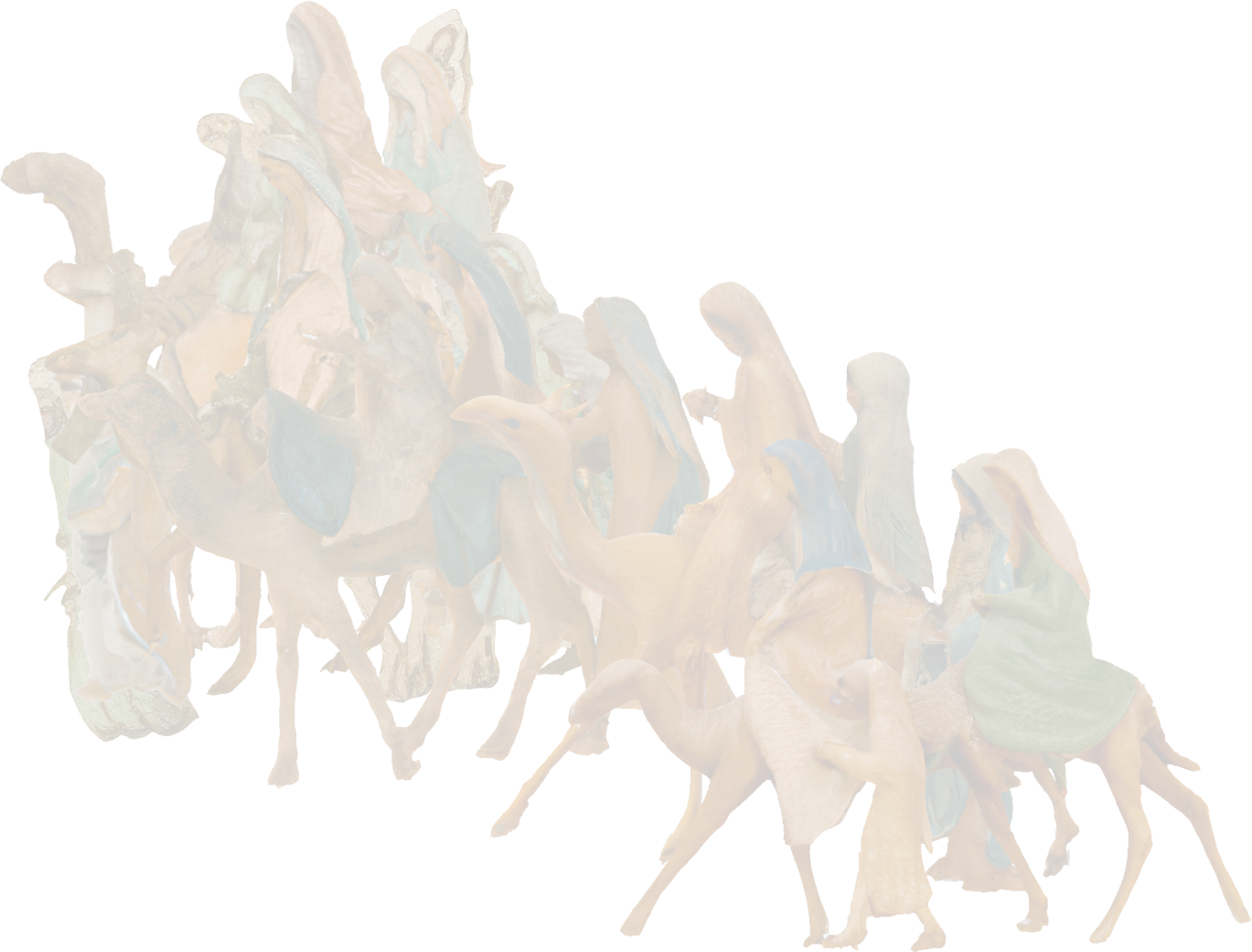




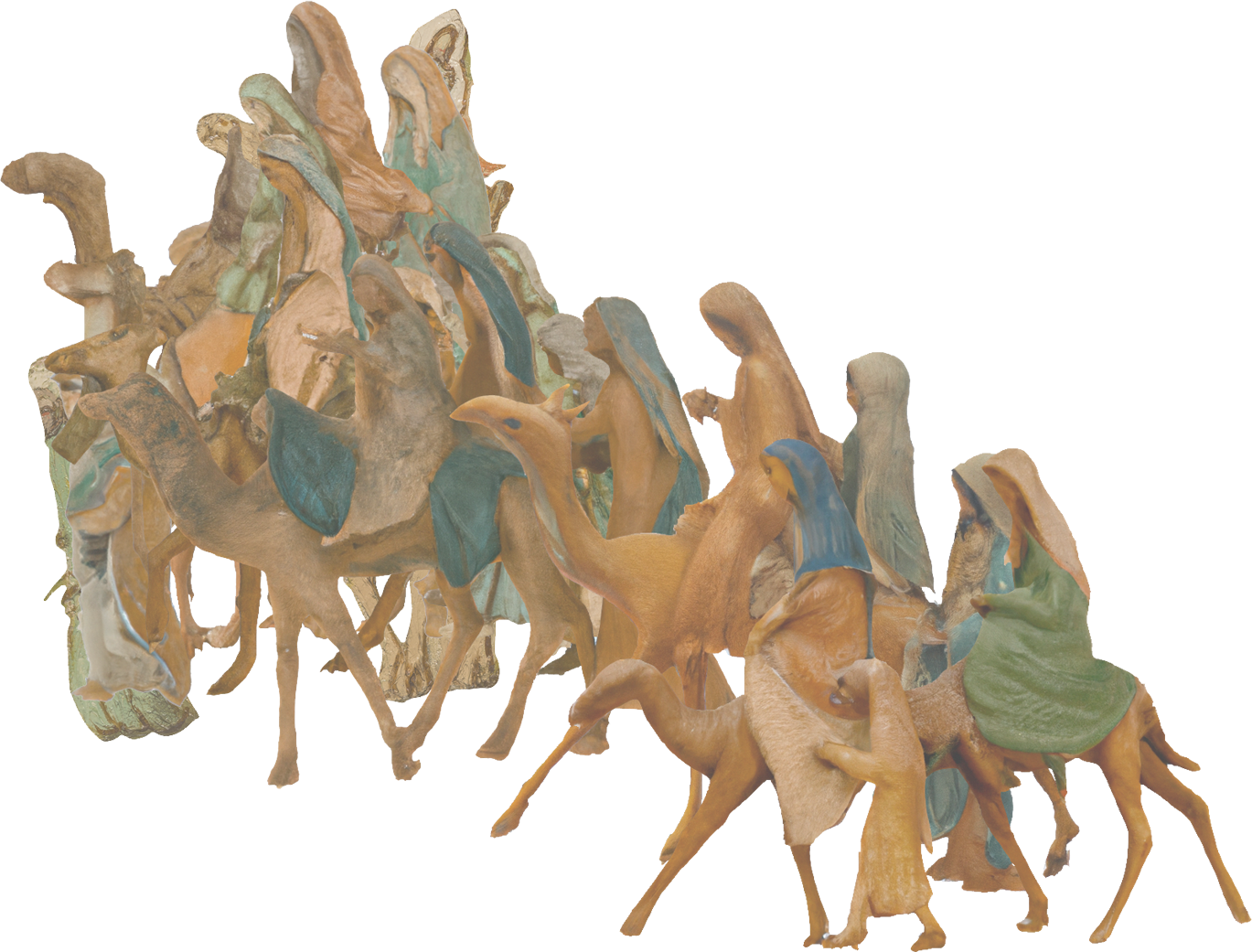
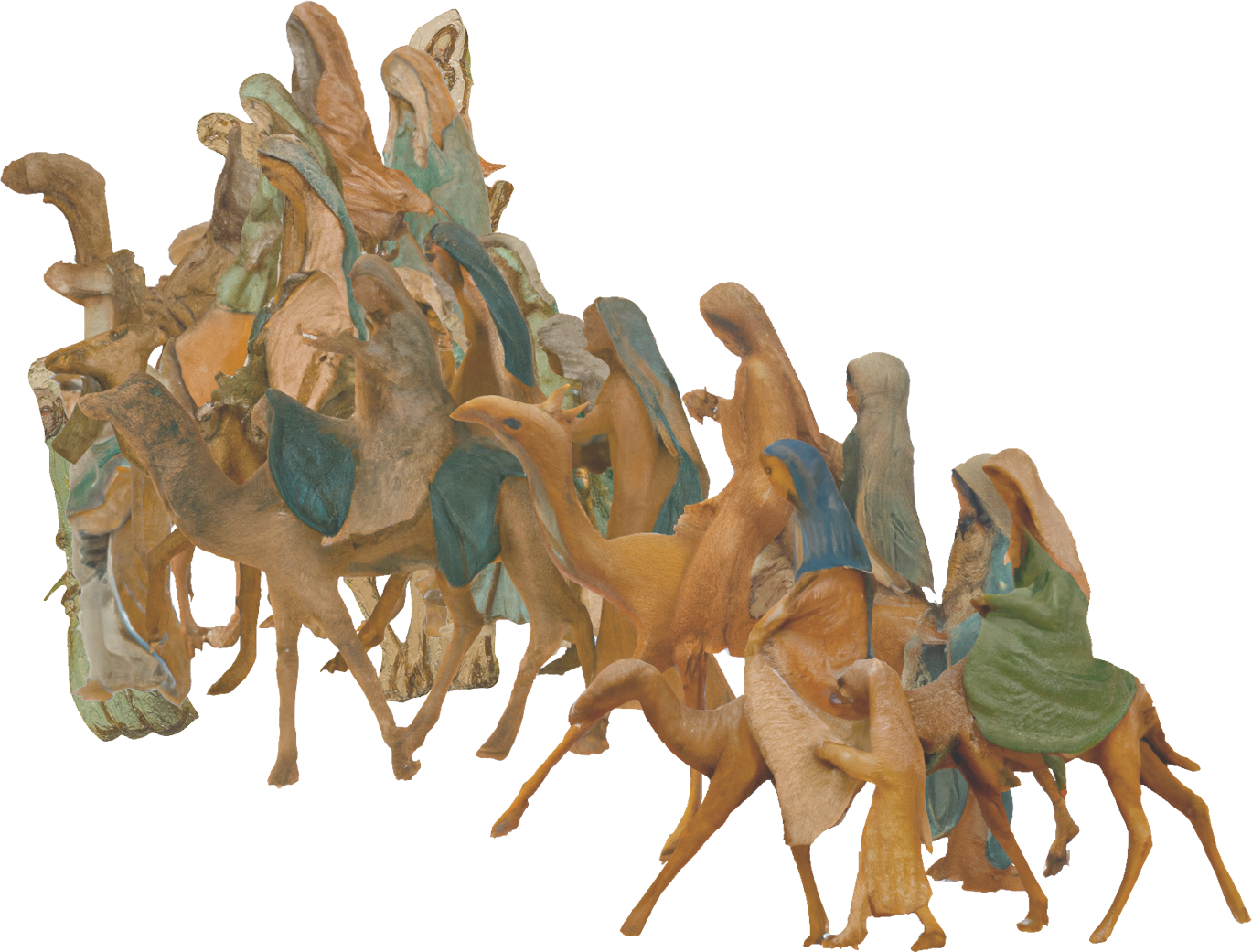
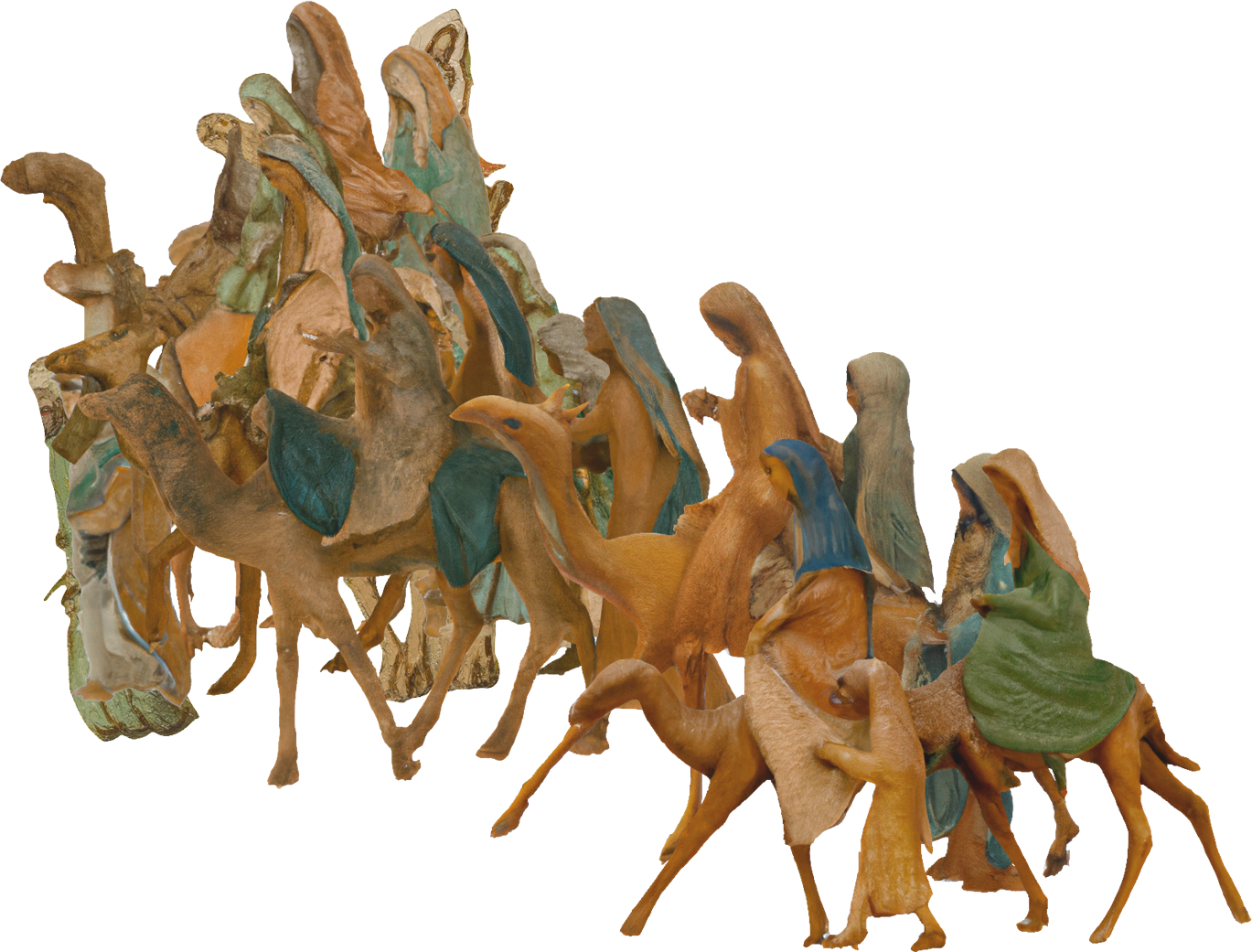










Three figures ripple against the uneven topography of a camel. Weathered skin folds and creases just as it responds to a steadying touch. Heads flatten and bodies vibrate. A torso curves with the softness of an inner ear—listening and receiving.
We spoke about the urge—tradition, protocol, fever—to share an image of Ghassan’s original painting here, to balance this ongoing distortion with a gesture towards its presumed beginning. An origin story. Why do we rely on the fantasy of these clear beginnings, following a linear and orderly progression to bring validity to our interpretive work? Archives hold this promise of stability—of originary or first-person “evidence”—but rarely deliver on it, instead offering further tangents, contortions, gossips, absences. And what happens when the so-called “original” is itself subject to these criss-crossing rhythms, as adaptations to the disjunctive violence of exile?
[4]
“Israel is lashing out at the U.N. after Secretary-General António Guterres said it was guilty of ‘clear violations of international humanitarian law’ and that the October 7 Hamas attack in Israel ‘did not happen in a vacuum.’” Democracy Now, October 25, 2023: [access here]
Having the power to determine the narrative of when a story starts is, of course, a deep-rooted tactic of colonial occupation.[4] And as we know, “beginning” is a highly relative and mutable term—a point of departure can look a lot like a conclusion, depending on your angle (like Mersal’s dream; both leaving her home while attempting to enter it).
Three figures press and subdivide, permeating between textile and skin and the rough hide of a camel. Together, they are paper-thin and delicate—they flutter in the wind as they twist. Their faces grow warm and ill-defined, as if seen through sunspots that speckle one’s vision.
[5]
Jalal Toufic, The Withdrawal of Tradition Past a Surpassing Disaster, Forthcoming Books, 2009.
[6] For more information on the destruction of cultural heritage in Gaza, see the Librarians and Archivists with Palestine report: “Israeli Damage to Archives, Libraries, and Museums in Gaza, October 2023-January 2024,” [access here]
[6] For more information on the destruction of cultural heritage in Gaza, see the Librarians and Archivists with Palestine report: “Israeli Damage to Archives, Libraries, and Museums in Gaza, October 2023-January 2024,” [access here]
Just as Jalal Toufiq speaks of the “withdrawal of tradition”
[5]
in the aftermath—or ongoing implementation[6]—of disaster, Ghassan’s work was already, perpetually, met with the distortions of occupation and exile. When tradition withdraws, it doesn’t disappear: it means that it can no longer be available, understood, or practised in the same ways. It transforms into something else, perhaps only accessible through the divergent attentions of those that are able, however obliquely, to reach for it.
Two figures convene to reflect upon the guise of beginnings, to contemplate—in the spirit of solidarity, togetherness, resistance—the complexities intrinsic to the act of attending to history. We perform our attention towards images that have already been so integrally distorted, or, to borrow Toufic’s imaginary, withdrawn.
Two, two, two—fingers tumble as the choral. Boundless watchful reaching, again. Warp and weft. A moment once sensing or calcified. Devotion, that is—felt along the strata.
Two figures convene to reflect upon the guise of beginnings, to contemplate—in the spirit of solidarity, togetherness, resistance—the complexities intrinsic to the act of attending to history. We perform our attention towards images that have already been so integrally distorted, or, to borrow Toufic’s imaginary, withdrawn.
Two figures removed, edges etched in white. Negative space found on the horizon line.
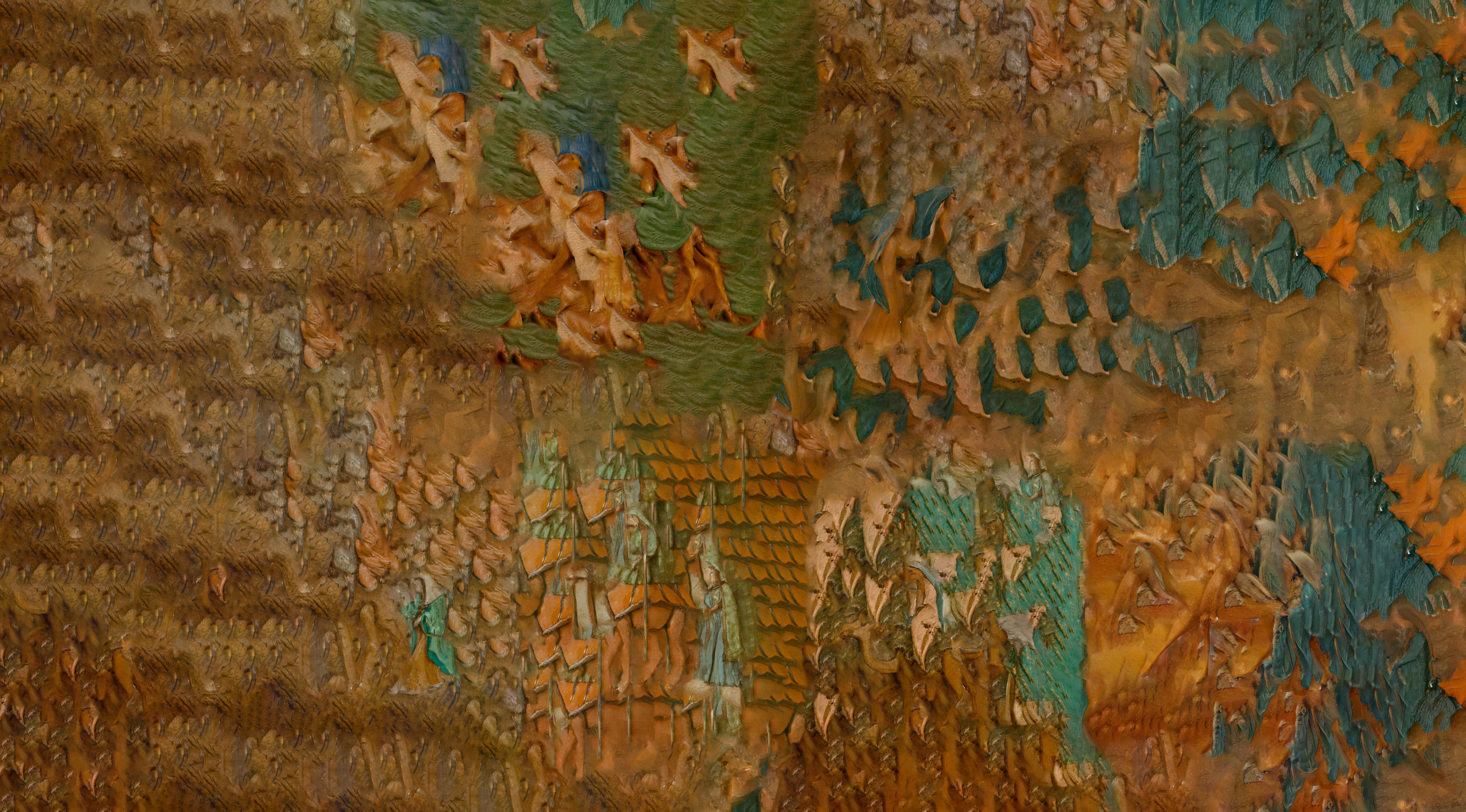
Artwork by Nour Bishouty
Web Design by Frederick Kannemeyer
Nour Bishouty
Nour Bishouty is a multidisciplinary artist working across video, sculpture, works on paper, digital images, and writing. Broadly concerned with gaps in archival memory and the Western production of knowledge and fantasy, her practice explores notions of permission and articulation in cultural narratives overwritten by dispossession and displacement. Bishouty’s work has been exhibited internationally including at La biennale de Québec (2024); Cooper Cole, Toronto (2024) Gallery 44 Centre for Contemporary Photography, Toronto (2022); the Museum of Contemporary Art, Toronto (2021); Darat Al Funun, Amman (2017); Casa Arabe, Madrid (2016); Access Gallery, Vancouver (2015); the Mosaic Rooms, London (2015); and the Beirut Art Centre, Beirut (2014). Upcoming exhibitions include Liverpool Biennial (2025).
︎ ︎ ︎ ︎
Daniella Sanader
Daniella Sanader is a writer and reader who lives in Toronto. For over ten years, she has been writing about (or, alongside) artists’ practices, contributing texts to a number of arts publications, galleries, and artist-run spaces across Canada and internationally. Currently, Daniella is a PhD candidate in Art History and Visual Culture at York University, where her doctoral research on artists’ writing is supported by a SSHRC Canada Graduate Scholarship.
︎ ︎ ︎ ︎

